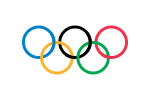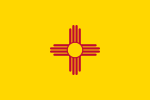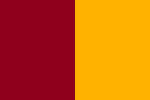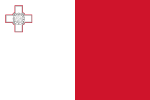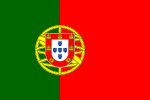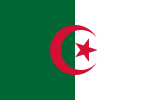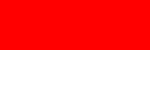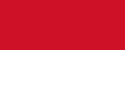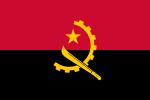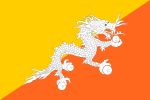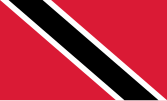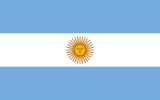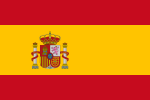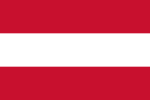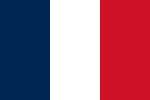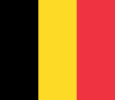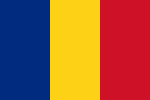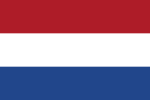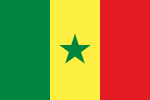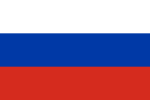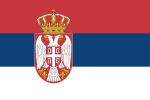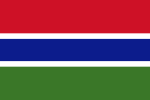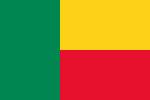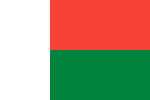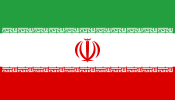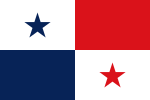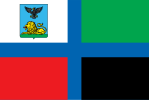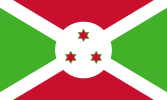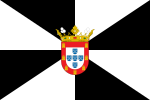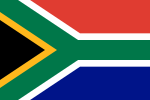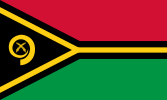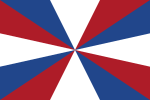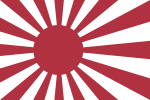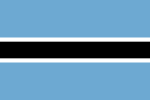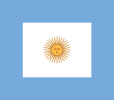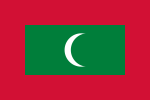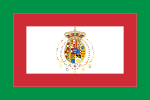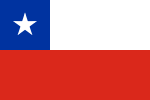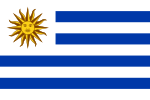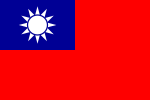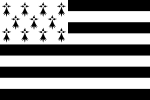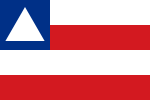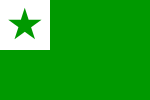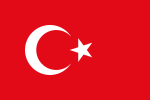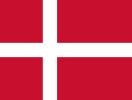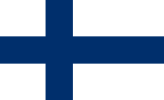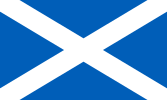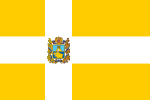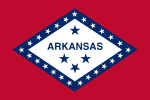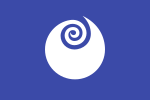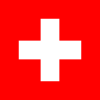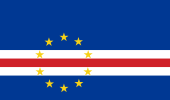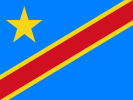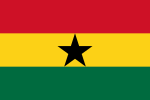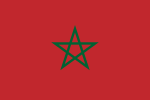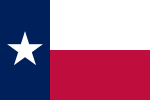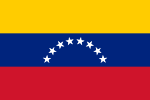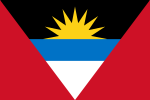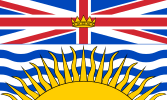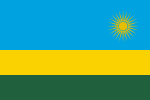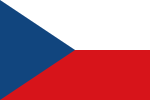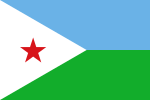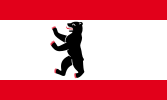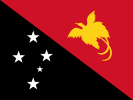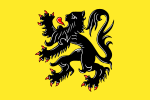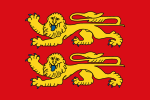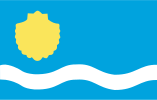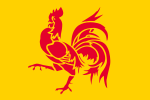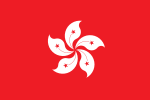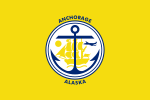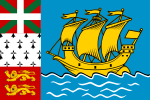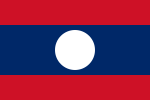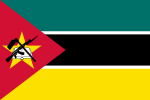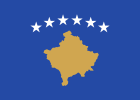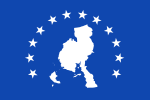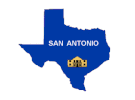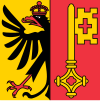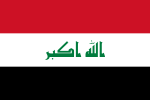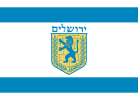
A national flag is a flag that represents and symbolizes a given nation. It is flown by the government of that nation, but can also be flown by its citizens. A national flag is typically designed with specific meanings for its colours and symbols, which may also be used separately from the flag as a symbol of the nation. The design of a national flag is sometimes altered after the occurrence of important historical events. The burning or destruction of a national flag is a greatly symbolic act.

The national flag of the Netherlands is a horizontal tricolour of red, white, and blue. The current design originates as a variant of the late 16th century orange-white-blue Prinsenvlag, evolving in the early 17th century as the red-white-blue Statenvlag, the naval flag of the States-General of the Dutch Republic, making the Dutch flag the oldest tricolour flag in continuous use. As a flag that symbolises the transformation from monarchy to republic, it has inspired both the derivative Russian flag, and after the French Revolution in 1789, the vertically striped French tricolour; both flags in turn influenced many other tricolours. During the economic crisis of the 1930s, the old Prince's Flag with the colour orange gained some popularity among some people. To end the confusion, the colours red, white and blue and its official status as the national flag of the Kingdom of the Netherlands were reaffirmed by royal decree on 19 February 1937.
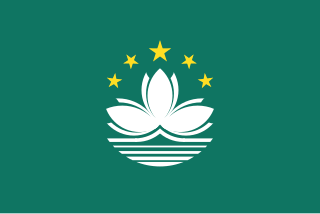
The Regional Flag of the Macau Special Administrative Region of the People's Republic of China is light green with a lotus flower above the stylised Governador Nobre de Carvalho Bridge and water in white, beneath a circular arc of five golden five-pointed stars: one large star in the center of the arc with two smaller stars on each side of the large star, each with a point angled directly outward from the center of the common circle on which they lie.

The State Flag of the Republic of the Union of Myanmar was adopted on 21 October 2010.

The national flag of Cameroon was adopted in its present form on 20 May 1975 after Cameroon became a unitary state. It is a vertical tricolour of green, red and yellow, with a yellow five-pointed star in its center. There is a wide variation in the size of the central star, although it is always contained within the inside stripe.

The national flag of Egypt is a tricolour consisting of the three equal horizontal red, white, and black bands of the Egyptian revolutionary flag that dates back to the 1952 Egyptian Revolution. The flag bears Egypt's national emblem, the Egyptian eagle of Saladin, centred in the white band.

The national flag of Kazakhstan, also called the Kazakh flag, was adopted on 4 June 1992, replacing the flag of the Kazakh Soviet Socialist Republic. The flag was designed by Shaken Niyazbekov.

The flag of Namibia consists of a red diagonal band edged in two white bands with a blue upper triangle charged with an 12-ray yellow sun and green lower triangle.

The flag of Nigeria was designed by Michael Taiwo Akinkunmi and was officially adopted to represent the nation of Nigeria at midnight on 1 October 1960, the day the country gained independence. The flag was chosen as part of a nationwide open contest held by the government, with Akinkunmi's design being selected as the winner of a field of over three thousand entries. The flag is a vertical bicolour green-white-green design, with the green to represent agriculture and white to represent peace and unity.

The flag of Peru was adopted by the government of Peru in 1825, and modified in 1950. According to the article 49 of the Constitution of Peru, it is a vertical triband with red outer bands and a single white middle band. Depending on its use, it may be defaced with different emblems, and has different names. Flag day in Peru is celebrated on 7 June, the anniversary of the Battle of Arica.

The flag of Tanzania consists of a Gold-edged black diagonal band, divided diagonally from the lower hoist-side corner, with a green upper triangle and light blue lower triangle. Adopted in 1964 to replace the individual flags of Tanganyika and Zanzibar, it has been the flag of the United Republic of Tanzania since the two states merged that year. The design of the present flag incorporates the elements from the two former flags. It is one of a relatively small number of national flags incorporating a diagonal line, with other examples including the DR Congo, Republic of the Congo, Namibia, Trinidad and Tobago and Brunei.

The flag of Trinidad and Tobago was adopted upon independence from the United Kingdom on 31 August 1962. Designed by Carlisle Chang (1921–2001), the flag of Trinidad and Tobago was chosen by the independence committee of 1962. Red, black and white symbolise fire, earth and water.

The national flag of Uzbekistan consists of a horizontal triband of azure, white and green, separated by two thin red fimbriations, with a white crescent moon and twelve white stars at the canton. Adopted in 1991 to replace the flag of the Uzbek Soviet Socialist Republic (SSR), it has been the flag of the Republic of Uzbekistan since the country gained independence in that same year. The design of the present flag was partly inspired by the former one.

In vexillography, the canton is a rectangular emblem placed at the top left of a flag, usually occupying up to a quarter of a flag's area. The canton of a flag may be a flag in its own right. For instance, British ensigns have the Union Jack as their canton, as do their derivatives such as the national flags of Australia and New Zealand.
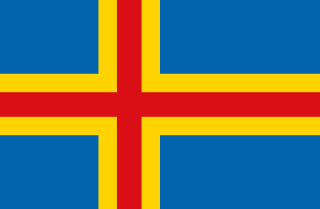
The flag of Åland is a yellow or gold Nordic cross with another red cross inside on a blue background with the vertical bar shifted towards the hoist side. It is intended to resemble the Swedish flag defaced by a red cross symbolizing Finland. The flag was officially adopted as the flag of Åland in 1954 and first hoisted in Mariehamn on 3 April 1954. Prior to autonomy, an unofficial horizontal bicolour triband of blue-yellow-blue was in use until it was made illegal in 1935.
A triband is a vexillological style which consists of three stripes arranged to form a flag. These stripes may be two or three colours, and may be charged with an emblem in the middle stripe. All tricolour flags are tribands, but not all tribands are tricolour flags, which requires three unique colours.

The flag of the Department of Santander is one of the symbols that identifies the Colombian Department of Santander.

The flag of Yugoslavia was the official flag of the Yugoslav state from 1918 to 1992. The flag's design and symbolism are derived from the Pan-Slavic movement, which ultimately led to the unification of the South Slavs and the creation of a united south-Slavic state in 1918.
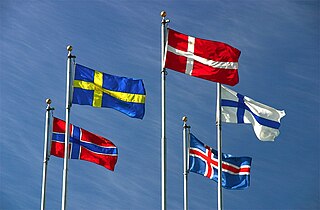
Flag families are sets of national flags with similarities in their design, often based on a shared history, culture, or influence. Families do not include flags with coincidental similarities. Flags may be in multiple flag families. Only twelve current national flags existed before the 19th century, when large-scale flag use began. Seven of these flags are the inspiration for more than 130 current national flags and ensigns.





